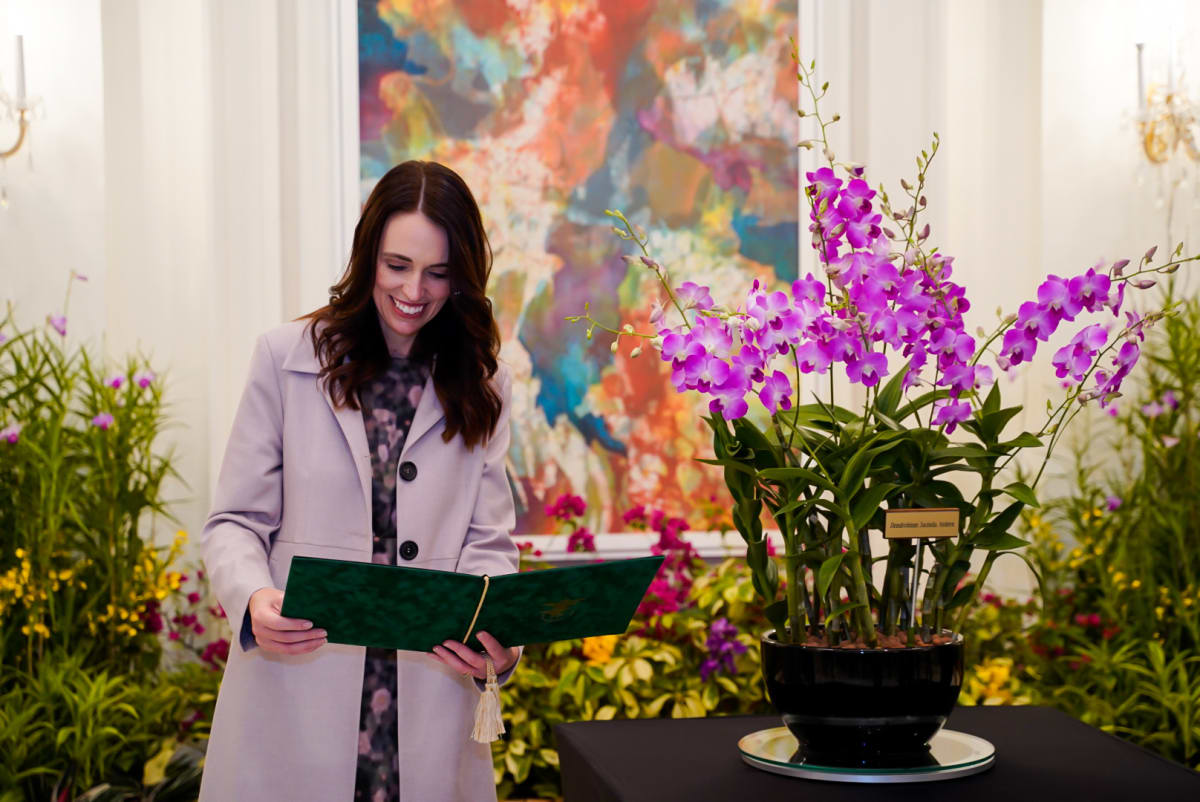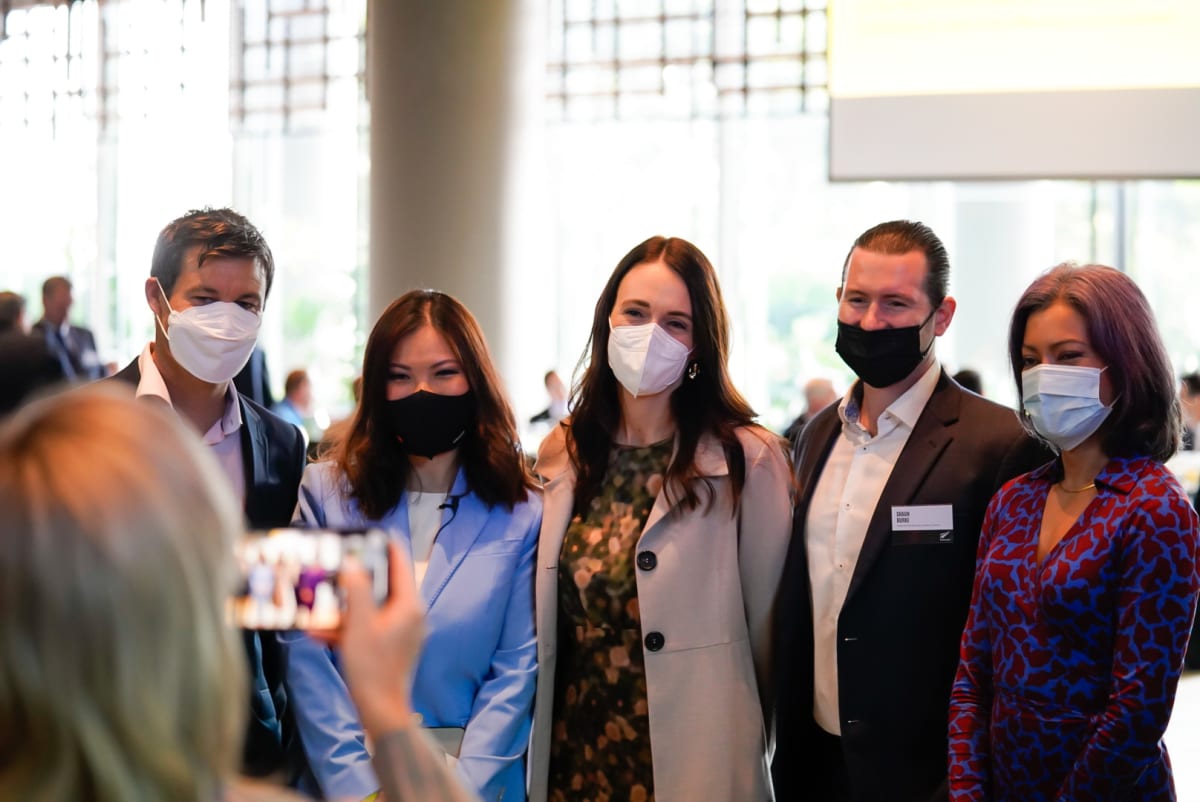
The biggest advertisement that the borders are open is the Prime Minister leaving home after two years. But the anxiety felt by those travelling in Jacinda Ardern’s delegation is just a taste of why others might not rush abroad, writes political editor Jo Moir.
Analysis: It’s a test nobody can prepare for but so much hinges on passing it.
Daily RAT tests and regular PCRs while on the Prime Minister’s mission to Singapore and Japan can make or break people’s time abroad, including Jacinda Ardern’s.
It adds another level of stress to what is already a fast-paced and intense four days - ramming as much in as possible to get the “biggest bang for the buck’’.
Three members of the roughly 50 people on the mission have already failed the first hurdle in Singapore, testing positive on their PCR test on arrival on Monday night.
All three positives were historic covid cases detected, which means they can carry on their business in Singapore with a doctor’s certificate waiver but cannot join the rest of the delegation on the Tokyo leg due to stricter rules.
Ardern and her team are taking daily RATs and on arrival in Tokyo the entire delegation is subject to a saliva PCR test and daily RATS.
And to get home again the contingent must pass a pre-departure PCR test in Tokyo on Friday morning.
It’s a stark reminder of the new world everyone is living in, and that international travel may not return to normal anytime soon, if at all.
While world leaders will have to put those extra measures aside for the sake of being ambassadors for their countries and reconnecting with the world, they may prove to be quite the barrier to free-flowing holiday travel ramping up anytime soon.
Restrictions have mostly dropped in UK and Europe, even testing requirements, but countries like Japan and China still have incredibly tough entry regimes and are still chasing elimination strategies.
That somewhat limits movement in our part of the world and with business meetings having moved online for the best part of two years it may just stay that way for many for some time yet.
It’s hard to beat face-to-face though and it was clear Singapore’s Prime Minister took some joy in returning to the usual pomp and ceremony of inspecting the guard and exchanging niceties in front of hordes of cameras.
There was also an orchid naming ceremony for Ardern, a special honour bestowed only on a visiting head of government or state.

Covid might have changed the world but Ardern’s visit, the first delegation to be received in Singapore since Covid struck, was quick to return to the old traditions, including motorcades and approximately 4 security personnel for every civilian.
Even a quick bathroom visit for Ardern in a secure hotel saw a train of at least four women with earpieces follow her in and back out again.
It’s also been a fast return to farcical rules that exist for no reason other than to irritate those afflicted by them.
Strict protocols around what type of cameras could be used for photographs and livestreaming have made for some awkward exchanges between the New Zealand delegation and Singapore officials.
Phones are not considered professional equipment, which has meant many journalists are running into problems reporting on the Prime Minister’s trip as they get barred from rooms or told to pull down their livestreams once they’ve already begun and have been pushed out to New Zealand audiences.
The exchanges and arguments for why journalists can’t film or enter rooms would almost be comical if media outlets hadn’t spent thousands of dollars flying their journalists overseas to capture the visit.
A lot has been squeezed into Ardern’s 1.5 days in Singapore and it’s very much a mixture of lavish and fancy events combined with some more low-key affairs.
Her first showing in Singapore on Tuesday morning after arriving on Monday night was a business breakfast and panel where three Singapore leaders in the digital and sustainability sector were interviewed and then took questions from the audience.
Ardern spoke briefly at the start of the event and then took her seat and faded into the background.
Much of the focus of the panel was about enabling entrepreneurs and how businesses can do their bit around climate change.

But when it came to the Q&A there was radio silence, bar the loud slow creak of a closing door, with not one person in the audience having a question for the panellists.
Nervous laughter trickled through the room before Ardern put her hand up and offered a question to save the members of her own business delegation.
It wasn’t the roaring start to finally being back on the international stage that officials might have had in mind.
Navigating China, Russia, and the US
Ardern’s bilateral meeting with her counterpart, Lee Hsien Loong, was a big gear change just a few hours later with geopolitical tensions front and centre in their talks.
While both countries are keen to see the United States’ presence in the Indo-Pacific region increase, specifically President Biden signing up to the CPTPP trade agreement, that has been ruled out anytime soon.
Trade Minister Damien O’Connor told Newsroom it just wasn’t a live issue for the US and that can had been well and truly kicked down the road.
Lee made similar remarks saying he’d received no indication the US planned to join the trade agreement.
If it were to happen it would go a long way to countering the growing influence China has in the region.
O’Connor told Newsroom the US had been clear it wanted to find other ways to be part of the conversation in this part of the world and that meant other frameworks and agreements would be openly explored to include the US.
Lee told media following his meeting with Ardern that, “it’s just off the table because their politics does not make it possible at present, and meanwhile they wish to remain engaged in the region by whatever means are feasible’’.
It’s a stark reminder of the new world everyone is living in, and that international travel may not return to normal anytime soon, if at all.
China’s relationship with Russia and the impact that might have on China-US relations was also discussed by the leaders.
“We both have a vested interest in China-US relations being stable and not being complicated or further sharpened by hostility or lack of trust on both sides. And we hope that wisdom will prevail and Ukraine will not make things more complicated,’’ Lee said.
In comparison Ardern stuck to comments she has previously made about the condemning of Russia’s actions - it was Lee who was more direct about the problems that could arise if a close eye isn’t kept on all the big players.
Lee summed it up best when he said it was in the interest of all countries in the South Pacific to have “stable, peaceful and prosperous” relationships.
It is during tough times that countries are reminded who their friends are and Ardern said when it came to Singapore the friendship was very close.
The two leaders found much to agree on in their talks – a diplomatic win for the officials doing the behind-the-scenes work.
Given the disputes and conflicts elsewhere and the strain of getting through the trip without needing to call it quits due to Covid, Ardern will be happy her first venture back onto the world stage was a friendly affair.







